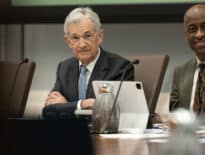Suneeth John
Deputy director and head of real estate, Fenway Community Development Corp.
Age: 49
Industry experience: 20 years
For years, Fenway residents have competed with local college students for the neighborhood’s limited supply of housing. Now, a series of major commercial developments have the potential to bring high-paying jobs and a new source of gentrification and displacement. On the front lines in the housing affordability battle for 51 years, the Fenway Community Development Corp. acquires and develops income-restricted properties, including such current projects as the Burbank Terrace apartments and the Our Lady’s Guild House roominghouse. Suneeth John leads the agency’s real estate team in identifying promising sites and finding financing sources to acquire and develop them.
Q: Was your career goal originally focused on the affordable housing field?
A: I was originally trained as an architect. I have an undergraduate degree in architecture from India, and came to the U.S. for graduate school at Penn State. I came to Boston in 2004 with my first job out of graduate school and worked in design and planning firms like Copley Wolff Design Group, Sasaki, Ai +Architecture, etc. In 2009, I was appointed to the Zoning Board of Appeals in Watertown, and that also helped me refocus my path and interest in real estate development, as over the next few years the projects on Arsenal Street were all starting to come together then.
This newfound interest led me to attend the master’s in real estate program at MIT. After the program, I went to work on the Union Point project in the South Shore, but the project ran into trouble. Coming out of that, I wanted to take some time off, but got an opportunity to work at Fenway CDC; the CDC has been looking to hire a director of real estate for a long time. This is my fifth year and we have had some good successes: the rehab of the Newcastle Saranac project with our partners Schochet; acquisition of a preapproved development parcel from Forest Properties, which is under construction and called Burbank Terrace. We bought a townhouse with six units at 43 Hemenway and will be converting them into affordable home ownership units. We also partnered with the Planning Office of Urban Affairs to acquire Our Lady’s Guild House, a lodging house which will be rehabbed and converted into 80-plus units of affordable housing.
Q: Is the Fenway market more conducive to acquisitions or development for Fenway CDC?
A: We are targeting both. It is a heavily built-up part of Boston, so it’s really hard to find development sites. To go back to Burbank Terrace, that was an approximately 3,500-square-foot parcel of land that we are developing into 27 units. These small sites cost more because of the nature of infill development. At the same time, we feel that’s something we can compete on. If it’s a sizeable parcel for sale, which is hard to come by in the Fenway, it is hard for us to compete. We are open to teaming up with other affordable housing developers who can be partners and are aligned with our mission.
We’re also looking at apartment buildings and converting them into affordable housing opportunities. That too is not that easy, as the Fenway has so many colleges, and it is easy for landlords to rent to students, who can afford more. It displaces a lot of folks out of the Fenway neighborhood and when these buildings come up for sale, other investors are looking at them for how they can do upgrades and put it back into the market for students or young professionals; there are a lot of great jobs coming into the Fenway because of life science development and Longwood Medical Area. Private investors can say, “We’ll close in three months,” which is something we cannot realistically do. Sometimes the sellers say, “We can’t wait. We’d rather sell to this guy,” and we lose our potential acquisition opportunities.
Q: What is the financing strategy for your upcoming projects such as 43 Hemenway?
A: The city has been very helpful. We are also working with developers in the Fenway, who have been supportive. For example, Samuels & Assoc. provided us with $1.3 million in funding as part of their 1400 Boylston St. [life science] project. We’ll have to tap into private community benefits or other funding sources to make up gaps in our projects. Fenway Corners is going to generate about $22 million in linkage fees, and they have publicly voiced support for keeping that in the Fenway. Hopefully the city will recognize the importance of deploying linkage fees in the same neighborhood. Since some of the larger projects are driving displacement, having the linkage come back to be used for expanding affordable housing opportunities is important.
Q: How are new sustainability regulations affecting your project costs?
A: It is a significant challenge, but we are supportive of the process. At the end of the day, it’s important to address climate change; we also expect these improvements will help operational costs. Any help from the city would be hugely useful in getting to those standards. Currently, the CDC is tapping into a city program for conducting energy studies and these reports will help us use funds in the most impactful way.
John’s Five Favorite Places to Meet, Eat or Drink in the Fenway:
- Ichiban Yakitori Sushi
- The Bebop
- WOW Tikka
- Hojoko
- Amoush’ella, Time Out Market




 |
| 


